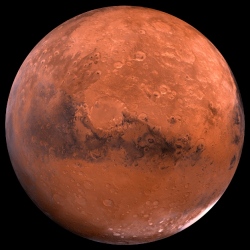
Almost a year since that white-knuckle airdrop landing inside Gale Crater, the Curiosity rover is embarking on its biggest Martian road trip yet. It’s driving toward the base of Mount Sharp, a conical mound taller than any peak in the continental 48 states, where it’ll study past Martian environments. Curiosity already found evidence that its new home once held water, probably a lot of it, and that the landing area known as Yellowknife Bay could have been habitable for Martian microbes. But what else could it find out?
It’s really an open question, according to scientists working on the Curiosity team. The rover is in the middle of a two-year initial mission, and while the team has several specific questions, Curiosity is all about discovery.
"There’s an aspect of this that is unknowable," Joy Crisp, deputy project scientist for the rover mission at the Jet Propulsion Laboratory, told DVICE. "We always get surprised."
As someone once said, there are "known unknowns" and there are "unknown unknowns." Curiosity’s science team can guess about the former, but not really the latter. For instance, a known unknown is a question like, "was the water on Mars acidic?" Scientists are aware they don’t know the answer, and they can devise more detailed questions to find out. But an unknown unknown would be a question we can’t even conceive of.
Curiosity’s main goal is to characterize the environment inside Gale Crater, and find out whether it could have (at some point) been a home for life. The rover is also trying to understand how water may have changed the surface of Mars over time, and in doing that, uncover the planet’s history. Mount Sharp may turn out to be like a Grand Canyon for Mars, with multiple layers of exposed rock that each tell a different tale
